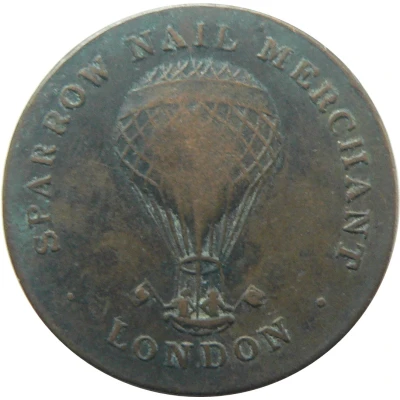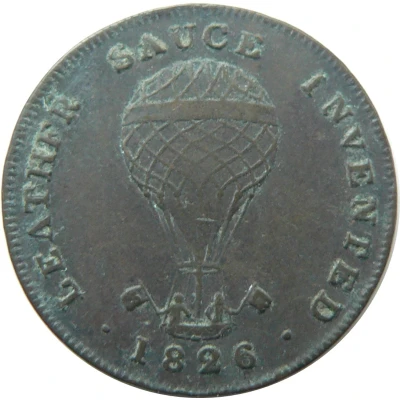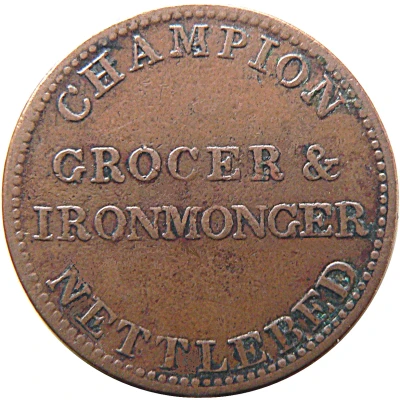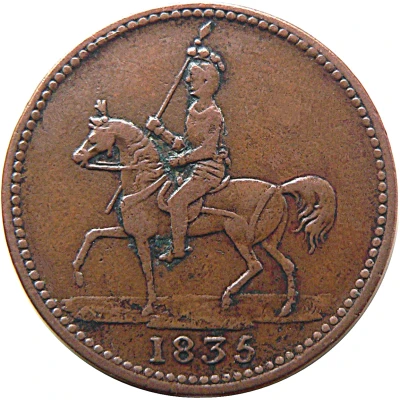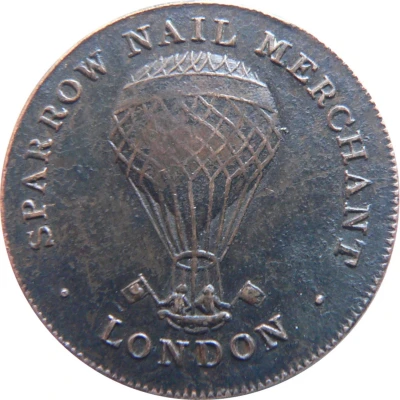
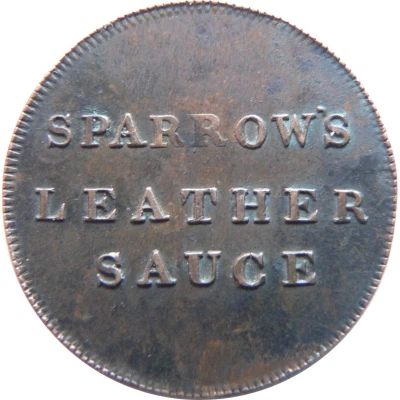

© ZacUK
1 Farthing - Sparrow Nail Merchant London ND
1826 year| Copper | 5 g | 23 mm |
| Location | United Kingdom (United Kingdom, British Overseas Territories and Crown Dependencies) |
|---|---|
| Type | Medals › Advertising medallions |
| Year | 1826 |
| Value | ¼ Penny (1⁄960) |
| Composition | Copper |
| Weight | 5 g |
| Diameter | 23 mm |
| Thickness | 1.5 mm |
| Shape | Round |
| Technique | Milled |
| Orientation | Medal alignment ↑↑ |
| Demonetized | Yes |
| Updated | 2024-11-14 |
| Numista | N#108343 |
|---|---|
| Rarity index | 94% |
Reverse
Three-line inscription
Script: Latin
Lettering: SPARROW'S LEATHER SAUCE
Edge
Plain
Comment
Catalogues: Mitchiner; 6481The piece is listed in Bell's "Unofficial Farthings 1820-1870" as Middlesex No. 12.
Another version of this token has same reverse; obverse has similar balloon design with LEATHER SAUCE INVENTED 1826 around.
The flamboyant businessman Isaac Earlysman Sparrow (b. Deptford 1793, d. London 1830) issued a number of fairly common advertising pieces, commonly construed as unofficial farthing tokens, in the mid-1820's. Sparrow, an ironmonger who in 1826 also produced a leather sauce (presumably some kind of polish or preservative) was obsessed with balloons. On 23 June 1823 he went up in one with Charles Green, a famous 19th century aeronaut, and boasted about it ever after. All known varieties of his tokens depict a balloon, and his premises in Bishopsgate were shortly afterwards named Balloon House.
Sparrow was twice afflicted by bankruptcy during his last few years, and one must wonder to what extent his ballooning interests were responsible for that. Could he, or would he, have issued lead tokens, either before his copper ones, or after his financial difficulties, when he was less affluent? His copper pieces are all around 23mm.
The New-York Literary Gazette and American Athenaeum, Volume 2 1827 - indicates that Sparrow's Leather Sauce was a "liquid blacking for polishing boots".
